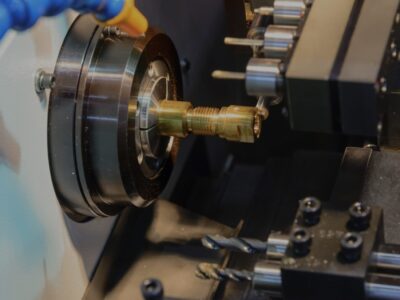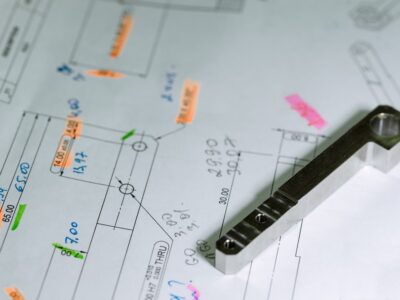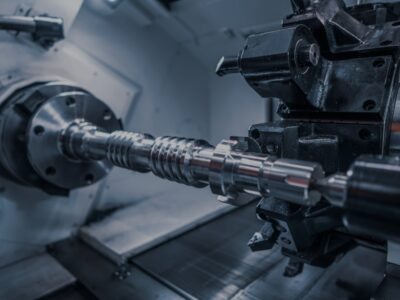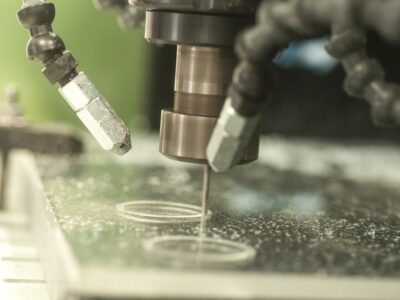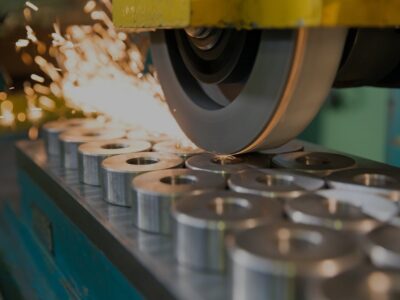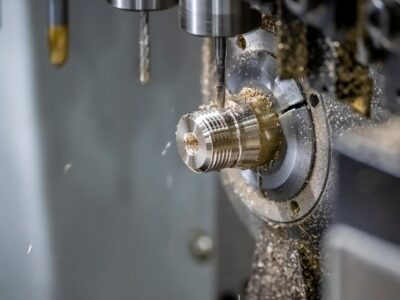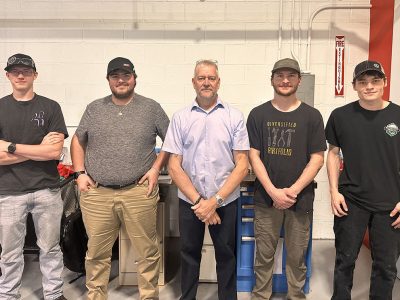Originally published on fastradius.com on April 8, 2021
Some degree of variation is inevitable in manufacturing, both between jobs and between individual units. With this in mind, product teams need a method of ensuring that components function as intended, regardless of the small variations between individual parts.
The ranges of acceptable variation, called tolerances, are the margin of error for a given part. Most often defined as a measurement range, tolerances may also include other qualitative factors like color, texture, shape, or profile. While attending to machining tolerances may seem like a small step in the manufacturing process, they are required to produce repeatable parts.
In CNC machining, effective tolerancing is especially important since tighter tolerances will add cost. For instance, producing a part with a particular shape and tolerance may require multiple cutting operations with different tools, which will lead to more time on the machine and higher costs. Some shapes and design features (such as sharp internal corners or those made with longer cutting implements) are much more difficult to achieve through CNC machining, which increases the cost of achieving tighter tolerances if these features are necessary and cannot be optimized out.
Tighter tolerances are going to cost more, no matter what, but these costs can often be accounted for or offset in how you approach the production process. Here are a few tips for cost-effectively achieving proper CNC tolerances.
1. Optimize part tolerances for each application
Standard machining tolerances are typically +/- .005” for metal parts and +/- .010” for plastic parts, but some components may require even less deviation along certain dimensions to ensure proper fit.
Tighter tolerances may be a necessary cost for a particular part application, in which case it’s best to limit tighter tolerances to only the necessary areas or surfaces of the component, as this meets design criteria while mitigating additional expenses. However, if tolerances for a part do not need to be extremely tight, then opting for the standard is an easy way to help reduce machining times and costs.
2. Match manufacturing methods with what’s most efficient
If tighter-than-standard CNC tolerances are required, one thing to consider is whether a different manufacturing process might be a better fit for producing particular features or components.
For instance, machining a hole with a vertical mill to one set of tolerances may require boring the hole to tighter tolerances if using a lathe, which would increase set-up costs and extend the production timeline. Parts with snug or tight-fit tolerance requirements may require additional steps (including grinding or lapping) to ensure that each component achieves the desired fit and finish.
3. Don’t ignore parallelism and perpendicularity
Parallelism and perpendicularity are two tolerances to prioritize, especially if you’re working with multiple components. They are especially critical for assemblies, as even a small degree of misalignment can lead to even greater misalignment over distance, which ultimately impacts the overall viability and quality of the part.
4. Align tolerance expectations with material machinability
Parts are often designed from specific materials to provide specific physical, chemical, or performance properties that are advantageous to the end-use applications. However, you also need to account for how those properties affect the workpiece’s machinability. For instance, hardened steels are much harder to mill than plastics.
Typically, the softer a material is (the lower its durometer), the harder it will be for the material to hold tighter tolerances. Soft silicones and resins can flex during cutting operations, and plastics like HDPE, nylon, and others may require additional tooling to achieve specified tolerances.
5. Design with the final inspection process in mind
The more difficult a part or feature is to machine, the more difficult it will be for you to measure its tolerances — in some cases, you may even need specialized equipment to properly measure certain features. Smaller parts or parts with especially small features are generally more difficult to manufacture and inspect (features smaller than 0.005” are difficult to see with the naked eye). If tight tolerances are necessary, it’s vital to have the proper equipment and tools to accurately inspect, measure, and verify those tolerances. Tight tolerances are only as accurate as the tools you have to measure them.
Proper geometric dimensioning and tolerancing yields numerous benefits
Ensuring that your parts are able to hold the desired tolerances requires that material selection, part design, and manufacturing process are all properly considered. Achieving these tolerances cost-effectively can be difficult due the number of variables and process controls required to account for all the environmental and mechanical factors in play during production.
Luckily, pairing up with an on-demand manufacturing partner like SyBridge can simplify the process. Our team works closely with each customer to optimize part designs to prevent costly revisions down the line — all while ensuring that parts machined in-house achieve accurate, tight tolerances every time. Contact us today to learn more.

